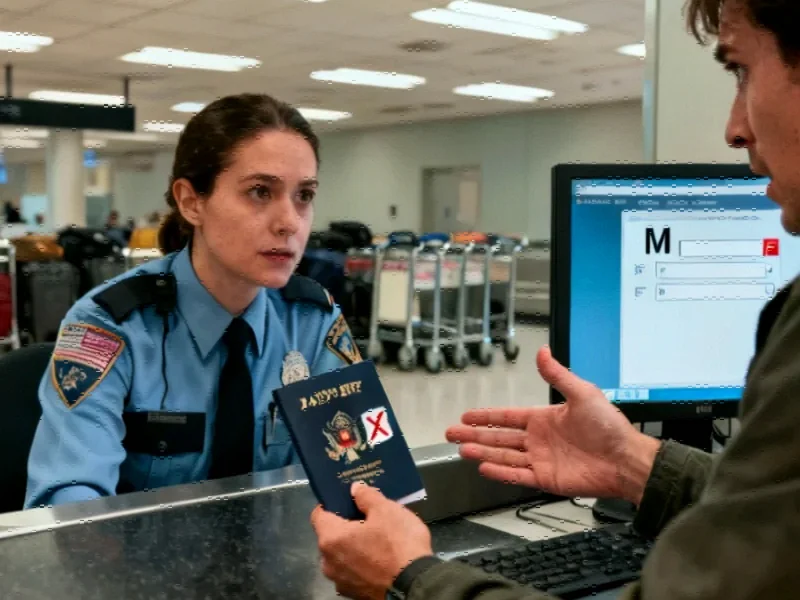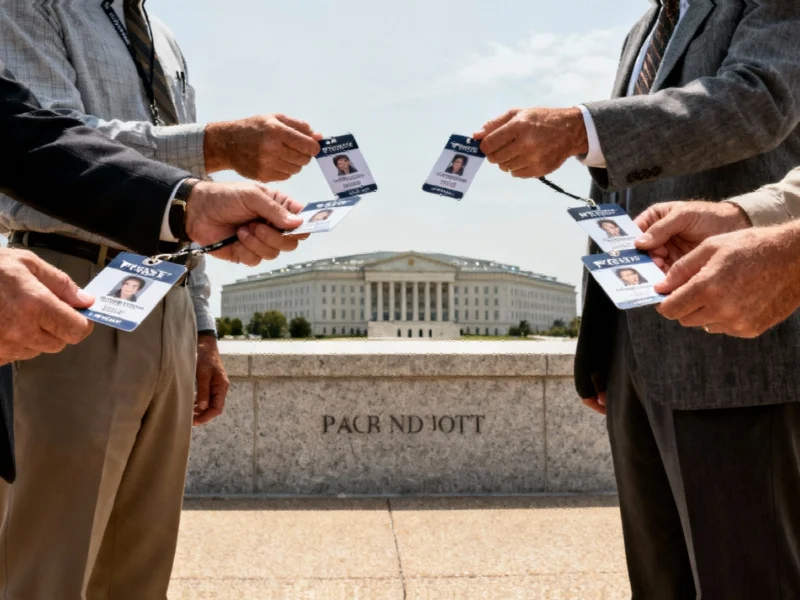Policy Shift in Travel Documentation Processing
The United States Customs and Border Protection (CBP) has implemented a significant policy change requiring airlines to override “X” gender markers on passports and instead input traditional “M” or “F” designations in their systems. This directive, enacted this week, has created uncertainty for travelers who utilize the non-binary gender option that became available on U.S. passports in 2022. The move represents a substantial shift in how travel documentation is processed and has raised questions about implementation consistency across different transportation sectors.
Legal Context and Implementation Challenges
Andy Izenson, senior legal director at the Chosen Family Law Center, noted the practical implications remain unclear. “It’s a little bit too soon to say how this is going to practically work out,” Izenson stated, highlighting the ambiguity surrounding enforcement mechanisms and responsibility. While passports with “X” markers remain legally valid travel documents following a Massachusetts district court order in June that prevented their elimination, the new rule creates a disconnect between official documentation and airline system requirements.
The policy change arrives amid broader industry developments in identification processing and comes as transportation authorities worldwide are updating their systems to accommodate diverse traveler needs. Legal experts suggest the implementation may vary significantly depending on individual agents and specific circumstances, potentially creating inconsistent travel experiences.
Impact on Transgender and Non-Binary Travelers
For individuals like Dr. July Pilowsky, a U.S. citizen and scientist residing in Spain, the policy change creates immediate practical concerns. “What I wanted to do was disrupt the process,” Pilowsky explained regarding their original decision to select the “X” marker. “When you have a sex marker that says ‘X’, then suddenly it’s difficult for the CBP officer to build an image of what you’re supposed to look like and compare you against it.”
Pilowsky described previous experiences with invasive security procedures that motivated their choice of the non-binary marker. Body-scanning technology that reveals anatomical features has particularly complicated airport experiences for transgender and gender-nonconforming travelers, as officers make judgments based on perceived discrepancies between physical appearance and documentation.
Broader Implications for Travel and Identification Systems
The controversy emerges alongside other significant market trends affecting international travel and border security protocols. While CBP maintains that “foreign travelers with authorized and valid US travel documents are being processed as they were previously,” the requirement for airlines to implement binary classification creates operational challenges for carriers that had begun adapting systems to accommodate diverse gender markers.
Carl Charles, counsel for Lambda Legal, emphasized the importance of accurate identification documents despite the current policy shift. “People need identity documents to navigate their everyday lives,” Charles noted, reflecting on the hard-won victory of securing “X” marker availability. The situation illustrates the complex intersection of recent technology in identification systems, governmental policy, and human rights considerations.
Legal and Operational Uncertainty
Izenson suggested the policy’s implementation would likely vary based on multiple factors, including “what gender they are perceived as, what their body looks like, what their skin tone is, how they’re dressed.” This subjectivity raises concerns about consistent application and potential discrimination. The legal director also questioned whether the policy’s true intention extends beyond practical travel considerations, suggesting it may be designed to create “a state of reactivity” that distracts from substantive advocacy work.
The policy change coincides with other related innovations in border security and travel documentation processing that are transforming how individuals move across international boundaries. As government agencies and transportation providers navigate these changes, balancing security concerns with respect for individual identity remains an ongoing challenge.
Looking Forward: Adaptation and Response
Travelers affected by the new rule are exploring various strategies to navigate the changed landscape. Pilowsky, who holds dual citizenship, is considering using their Chilean passport for future U.S. entry to avoid complications. Meanwhile, legal organizations monitor the situation closely, prepared to challenge specific implementations that create undue burdens or discrimination.
As the travel industry continues to evolve in response to changing identification standards and government requirements, this development represents another chapter in the ongoing conversation about how modern technology and systems can best serve diverse populations while maintaining security and operational efficiency.
The ultimate impact of the policy will depend largely on its practical implementation in coming months, with legal experts noting that future challenges will be shaped by real-world experiences at airports and border crossings worldwide.
This article aggregates information from publicly available sources. All trademarks and copyrights belong to their respective owners.
Note: Featured image is for illustrative purposes only and does not represent any specific product, service, or entity mentioned in this article.



